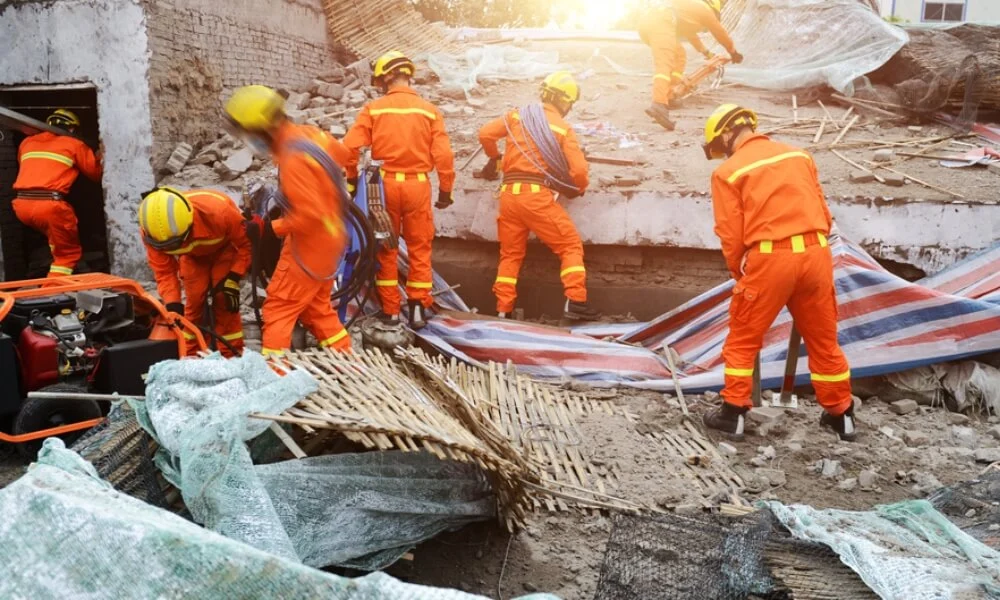Natural hazards are as ancient as our planet, yet their profound effects on humanity and our environment remain a topic of continuous study and preparation. In this comprehensive guide, “What are Natural Hazards? Definition, Types, Causes, and Safety,” we delve deep into the world of these daunting phenomena that can reshape landscapes, alter lives, and compel communities to unite in recovery and resilience.
We’ll uncover the intricate definitions, classify the diverse types, probe into their underlying causes, and, most importantly, furnish you with actionable safety measures to protect yourself and your loved ones. Whether you’re a student, a concerned individual, or someone living in a hazard-prone region, this blog seeks to inform, prepare, and empower its readers in the face of nature’s unpredictable power.
What are Natural hazards? Definition
Natural hazards are environmental phenomena that potentially harm human societies and the surrounding environment. They are naturally occurring events or conditions that may lead to loss of life, injury, property damage, and disruption to human activities. These hazards range from meteorological events like hurricanes, droughts, and heatwaves to geophysical occurrences like earthquakes, tsunamis, and volcanic eruptions.
While natural hazards are inevitable and often unpredictable, their actual impact on communities can be managed and mitigated through preparedness, adaptation, and understanding of their nature and dynamics.
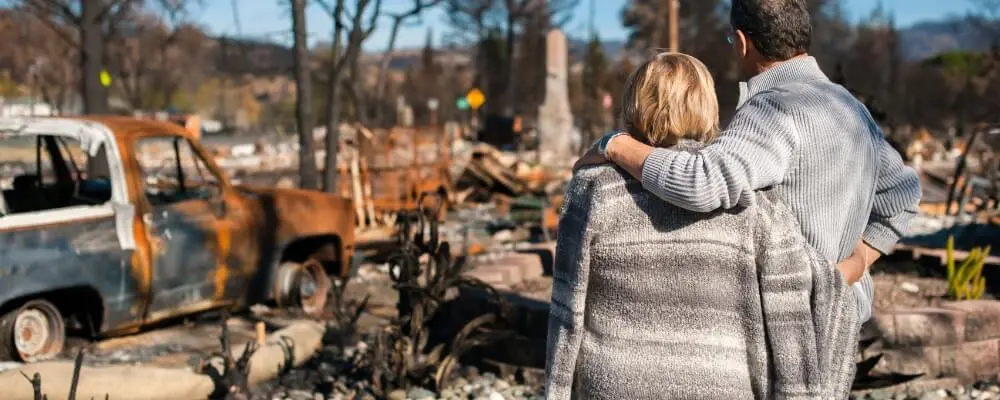
Types Of Natural Hazards
Natural hazards encompass various events stemming from Earth’s natural processes that can adversely impact human life, property, and ecosystems. Here’s a simplified breakdown and explanation of 10 prominent types of natural hazards:
1. Earthquakes
Originating deep within the Earth, earthquakes manifest as a sudden release of energy, leading to the noticeable shaking of the ground. This abrupt release often stems from the movement of tectonic plates beneath the Earth’s crust, either from sliding past one another or from one plate being forced under another in subduction zones. While earthquakes can occur anywhere, regions near fault lines or plate boundaries tend to experience them more frequently and with greater intensity.
The tremors can lead to devastating structural damage and collapsing buildings, roads, and bridges. Moreover, they can set off landslides in hilly or mountainous regions and even change the course of rivers. Due to their unpredictability, they often result in significant loss of life, making them one of the most feared natural hazards.
2. Tropical Cyclones
These colossal storm systems are birthed over warm ocean waters, drawing their strength from the heat and moisture of the sea. Depending on their location, they’re called hurricanes, typhoons, or simply cyclones. Characterized by their swirling appearance from a satellite view, these storms come with powerful winds that can reach alarming speeds, torrential rain, and a storm surge that raises the sea level, causing flooding in coastal areas.
As they move onto land, they often lead to massive destruction, uprooting trees, destroying homes, and claiming lives. While their formation can be monitored, predicting their exact path and intensity remains challenging, causing communities to often evacuate in their wake.
2. Floods
One of the most common natural disasters, floods, is water overflow beyond its regular confines. This inundation can result from many factors: days of continuous heavy rainfall saturating the ground beyond its capacity to absorb snow melting in mountainous regions to storm surges associated with cyclones. Cities with poor drainage systems or areas near riverbanks are particularly susceptible.
The impact of floods can be catastrophic, from displacing populations and damaging crops to destroying infrastructure. Beyond the immediate visible destruction, floods can also lead to secondary issues like the outbreak of waterborne diseases.
3. Droughts
Standing in stark contrast to floods, droughts are characterized by prolonged periods of abnormally low rainfall in a particular region. Such conditions lead to a depletion of groundwater and reservoir levels, resulting in acute water shortages. The effects of droughts are gradual but can be severely detrimental.
Agricultural lands become barren, leading to food scarcity, and lack of fodder affects livestock. As water sources dry, plant and animal life suffers, causing long-term ecological damage. On a societal level, it can lead to migrations as communities move in search of better conditions.
4. Wildfires
Often painting dramatic and terrifying scenes, wildfires are rapid, uncontrolled fires that blaze across vegetation, particularly in regions with dry, hot conditions. These fires can ignite due to natural causes like lightning strikes or human negligence, such as discarded cigarette butts or unattended campfires.
Fueled by dry vegetation and often fanned by strong winds, they can spread quickly over vast areas, consuming everything in their path. Beyond the immediate destruction of flora, fauna, and human property, wildfires significantly affect air quality, producing dense smoke that can be hazardous to health.
5. Tsunamis
These are gigantic sea waves, often incorrectly referred to as “tidal waves,” though they have no relation to tides or tidal actions. Powerful underwater earthquakes typically cause tsunamis, though volcanic eruptions and landslides can also trigger them. As the sea floor abruptly deforms and vertically displaces the overlying water, waves surge outward from the epicenter.
Approaching the shore, these waves grow in height and can flood coastlines with devastating force. Their impact is two-fold: the initial inundation can cause loss of life and property, and as the water recedes, it can drag debris and people back into the ocean. Often, multiple waves can hit the shore in succession, with later waves being even more destructive than the first.
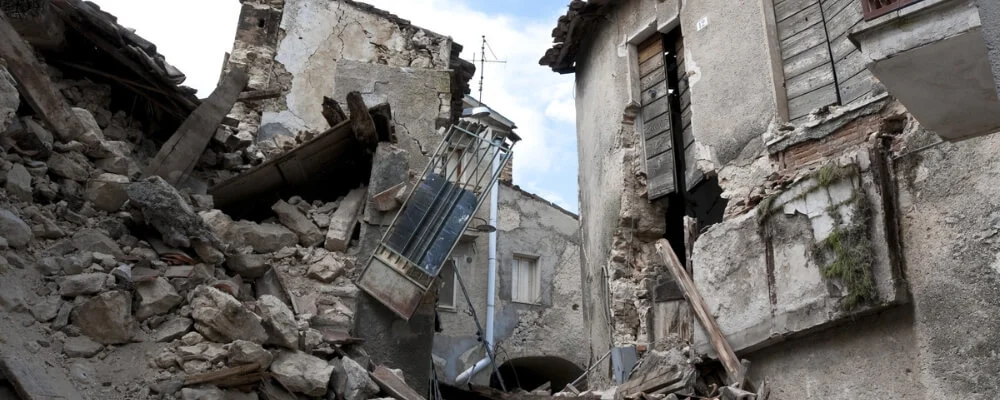
6. Volcanic Eruptions
Earth’s internal heat and pressure sometimes reach a breaking point, causing the explosive release of molten rock known as magma. When magma forces its way to the surface, it results in a volcanic eruption. Beyond the evident dangers of flowing lava, eruptions can spew vast amounts of ash and gas into the atmosphere. This ash can blanket areas, rendering them uninhabitable, polluting water sources, and damaging agriculture.
When injected high into the atmosphere, volcanic ash can linger, disrupting global air travel by endangering aircraft. Volcanic gases, notably sulfur dioxide, can contribute to global cooling by forming aerosols that block sunlight.
7. Landslides
Gravity constantly pulls everything downward, and when the cohesion of a hill or mountain’s face is compromised, it can lead to a landslide. This sudden and rapid movement of a large amount of earth material downhill can be triggered by various factors. Persistent heavy rainfall can saturate the ground, making it heavy and slippery.
Earthquakes can shake loose vast amounts of soil and rock. Human activities, like deforestation or construction without proper terracing, can destabilize slopes. The cascading mass in a landslide can engulf homes, roads, and people, leaving destruction in its wake.
8. Heatwaves
While warm weather can be pleasant, prolonged excessive heat can be dangerous. Heatwaves, characterized by temperatures that soar beyond the norm for a region, pose a considerable health threat. As the body struggles to cool down, there’s an increased risk of dehydration, heat exhaustion, and more severe heatstroke.
Vulnerable populations like children, the elderly, and those with underlying health conditions are at heightened risk. Prolonged heatwaves can also exacerbate drought conditions and lead to wildfires.
9. Tornadoes
Among the most violent meteorological phenomena, tornadoes are narrow, rapidly rotating columns of air in contact with a thunderstorm’s ground and base. Their formidable wind speeds can cause a trail of destruction, ripping apart buildings, uprooting trees, and hurling debris like deadly projectiles.
While they can form almost anywhere, certain regions, like the US Midwest, are particularly prone to tornadoes, leading to vigilant monitoring and warning systems.
10. Avalanches
In snowy mountainous terrains, the tranquil white landscape can turn deadly in moments when an avalanche occurs. It’s a mass of snow, often mixed with ice and debris, cascading rapidly down a slope. Several factors can set off avalanches, from new snowfall adding weight to warming temperatures melting the bonds between snow layers to disturbances such as loud noises or human activity.
For those caught in its path, the power and weight of the snow can be lethal, burying and entrapping them. This danger underscores the importance of caution in such terrains, especially post-snowfall.
11. Cold Waves
On the flip side of heatwaves, cold waves are characterized by a sharp temperature drop, staying significantly below the average for a region. The biting cold can have several adverse effects. Humans are at risk of frostbite, where skin and underlying tissues freeze, and hypothermia, where body temperature drops to dangerously low levels. Infrastructure, too, faces challenges.
Water in pipes can freeze, causing them to burst. Roads become icy and treacherous. A cold wave can be life-threatening for vulnerable populations, like people experiencing homelessness or those without proper heating.
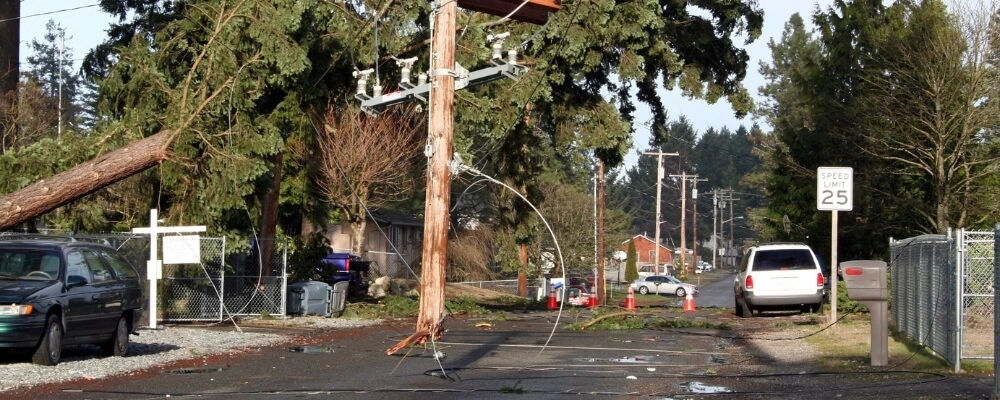
Different Causes Of Natural Hazards
Natural hazards can arise from various geological, meteorological, and hydrological sources. Understanding their causes is crucial for prediction, preparation, and mitigation. Here are the causes of some prominent natural hazards:
- Earthquakes: They are caused primarily by the tectonic forces generated by the movement of Earth’s lithospheric plates. These forces cause stress, and when the stress overcomes the inherent strength of rocks, it results in an earthquake. Other causes include volcanic activity or landslides.
- Tropical Cyclones/Hurricanes/Typhoons: These storms form over warm ocean waters when the atmosphere’s conditions favor their development. The warm water heats the air above, causing it to rise and create a low-pressure system, which then draws in more air, leading to the formation of cyclones.
- Floods: These can result from prolonged heavy rainfall, melting snow, storm surges from cyclones or a combination of these factors. Human actions, like deforestation and poor urban planning, can also exacerbate flooding.
- Droughts: Caused by extended periods of below-average rainfall. They can be exacerbated by high temperatures that increase evaporation rates, poor water management practices, and deforestation.
- Wildfires: While these can be ignited by natural causes like lightning, human activities like land-clearing, campfires, or discarded cigarettes often start them. Prolonged dry periods and strong winds can also contribute to the rapid spread of wildfires.
- Tsunamis: Generally caused by underwater seismic activities, such as earthquakes, volcanic eruptions, or landslides. The sudden displacement of a large volume of water triggers these massive waves.
- Volcanic Eruptions: Arise from the movement of magma beneath the Earth’s crust. When gas pressure within the magma becomes too high, an eruption can release gas, ash, and lava.
- Landslides: These can be triggered by a combination of factors, including heavy rainfall, earthquakes, volcanic activity, or human disturbances like deforestation and improper construction.
- Heatwaves: Caused by high-pressure systems trapping warm air in an area. Human-induced climate change is also believed to intensify and prolong heatwaves.
- Tornadoes: They form from severe thunderstorms in specific atmospheric conditions. A combination of cold, dry air with warm, humid air can form these deadly spinning columns.
- Avalanches: Triggered by many factors like additional snowfall, disturbances such as human activity, or warming temperatures that weaken the snowpack.
- Cold Waves: Result from cold air masses moving into an area, leading to significantly lower temperatures. Polar or arctic air outbreaks can lead to these cold spells.
In addition to these natural processes, human activities play a significant role in amplifying the frequency and intensity of many hazards. Climate change, deforestation, urban development in vulnerable areas, and poor land-use practices can exacerbate the risks associated with many natural hazards.
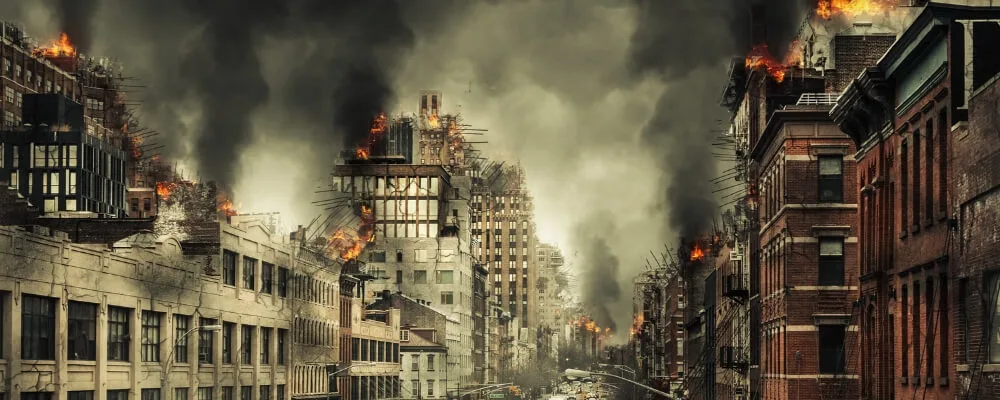
Effective Tips to Help You Stay Safe During a Natural Disaster
Staying safe during a natural disaster requires awareness, preparation, and quick response. Here are some effective tips to help you ensure safety during various natural disasters:
1. Stay Informed
Being well-informed is the first step in ensuring safety during a natural disaster. This means regularly monitoring local news channels, radio broadcasts, and trustworthy online sources. The advancements in technology now allow us to have real-time updates at our fingertips through various apps and alerts.
NOAA Weather Radio and local alert systems are examples of platforms that can instantly notify you about impending disasters. Knowledge empowers people to make informed decisions, especially with limited reaction time.
2. Create an Emergency Kit
An emergency kit acts as a lifeline during a crisis. It should be packed with essentials, including non-perishable food items, enough water to last several days, and fundamental tools like a flashlight and batteries. A multi-tool can serve multiple purposes, from cutting to fixing minor issues. Immediate medical attention might not be available, so having a first-aid kit is crucial.
A battery-powered radio keeps you updated when power lines are down. Personal hygiene items, like wet wipes and hand sanitizers, help maintain cleanliness. Important documents, such as identification and property papers, should be safeguarded in waterproof containers. And in today’s digital age, having chargers for your devices ensures you stay connected.
3. Make a Plan
Anticipation and planning can make a significant difference during emergencies. Families should discuss potential escape routes from their homes and practice them. It’s also vital to decide on a common meeting point in case family members get separated in the chaos.
Furthermore, when formulating a plan, the requirements of elderly family members, children, and pets shouldn’t be overlooked, as they might need special care or resources.
4. Secure Your Home
Your home is your sanctuary; taking measures to fortify it can prevent further damage. Reinforcing key areas like windows, doors, and roofs can minimize destruction from heavy winds or flying debris.
Especially heavy furniture should be fastened to walls to prevent them from toppling over during tremors. Electrical appliances should be placed above potential flood levels to prevent electrical hazards.
5. Follow Authorities’ Orders
Authorities have the expertise and resources to assess the gravity of a situation. If evacuation orders are issued, it’s imperative to heed them immediately. Procrastination can lead to life-threatening situations. In contrast, during some hazards like chemical leaks, the best action might be to stay indoors. In such scenarios, sealing windows and doors becomes essential to prevent exposure.
6. During an Earthquake
Earthquakes strike suddenly, causing panic. The best immediate response is to “Drop, Cover, and Hold On.” Taking shelter under robust furniture can protect from falling debris. It’s equally vital to steer clear of windows and outer walls to avoid getting hurt from shattered glass or external damage.
7. During Floods
Floodwaters can be deceptively strong. Even a seemingly placid flow can overpower a person or a vehicle. If you are amidst rising waters, heading to higher ground is the best resource. Delays can be dangerous, especially in flash floods that can surge without warning.
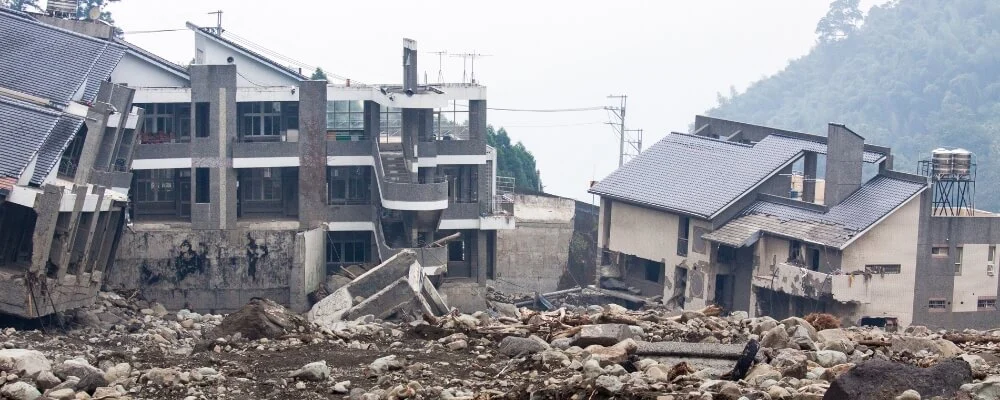
8. During Tornadoes
Tornadoes are fast and ferocious. The safest place during such a storm is in a basement or an interior room on the ground floor. Since tornadoes hurl debris around, shielding your head and neck using your arms or any sturdy item nearby is critical.
9. During Hurricanes
Hurricanes punch with strong winds, heavy rain, and potential storm surges. If you live in an area prone to hurricanes, the wisest move is to evacuate if advised by authorities. If evacuation isn’t an option, staying indoors and away from windows and glass doors can prevent injuries from shattered glass.
10. During Wildfires
Wildfires spread rapidly, consuming everything in their path. If you observe smoke or flames, evacuating without delay is essential. Keeping all entry points of your home sealed can prevent embers, which can travel long distances, from sneaking in.
11. During Heatwaves
Heatwaves and prolonged periods of extreme heat can pose health threats. Hydrate regularly to combat the oppressive heat and abstain from demanding physical activities during peak heat times. Using fans or air conditioning and dressing in breathable, light-colored clothes can alleviate the discomfort.
12. Stay in Touch
Communication becomes even more crucial during disasters. Ensure your phone is charged or have a battery-operated radio handy to keep abreast of the situation. Also, keeping a trusted person informed about your location and plans provides an additional layer of safety.
13. Know Community Resources
Every community has resources earmarked for disasters. Familiarizing yourself with local shelters, known evacuation routes, and emergency services can ease the panic during a crisis and offer a clear direction.
14. Be Cautious Post-Disaster
The aftermath of a disaster can be just as treacherous. Infrastructure might be compromised, posing unseen threats. Downed power lines, often overlooked, can be lethal, and it’s paramount to report them. Until local authorities give a green signal, it’s safe practice to boil tap water to eliminate potential contaminants.
15. Mental Health Matters
Physical safety is paramount, but the psychological impact of disasters can’t be brushed aside. Natural disasters can be traumatic. Sharing experiences and feelings can be therapeutic. And if the emotional weight becomes too heavy, seeking professional help can pave the path to healing.
Conclusion
In the grand tapestry of Earth’s history, natural hazards have persistently played a pivotal role, testing the limits of ecosystems and human resilience. Through exploring their definitions, myriad types, underlying causes, and essential safety protocols, we’ve embarked on a journey to better understand these formidable forces. Knowledge is our first line of defense, and by becoming informed about these phenomena, we recognize their inherent power and equip ourselves to mitigate their potential impacts.
As we coexist with these natural processes, our collective awareness and preparedness can help transform potential tragedies into tales of human perseverance and adaptability. In the face of nature’s unpredictable temperament, the true measure of our progress isn’t just how we weather and rise after the storm.

